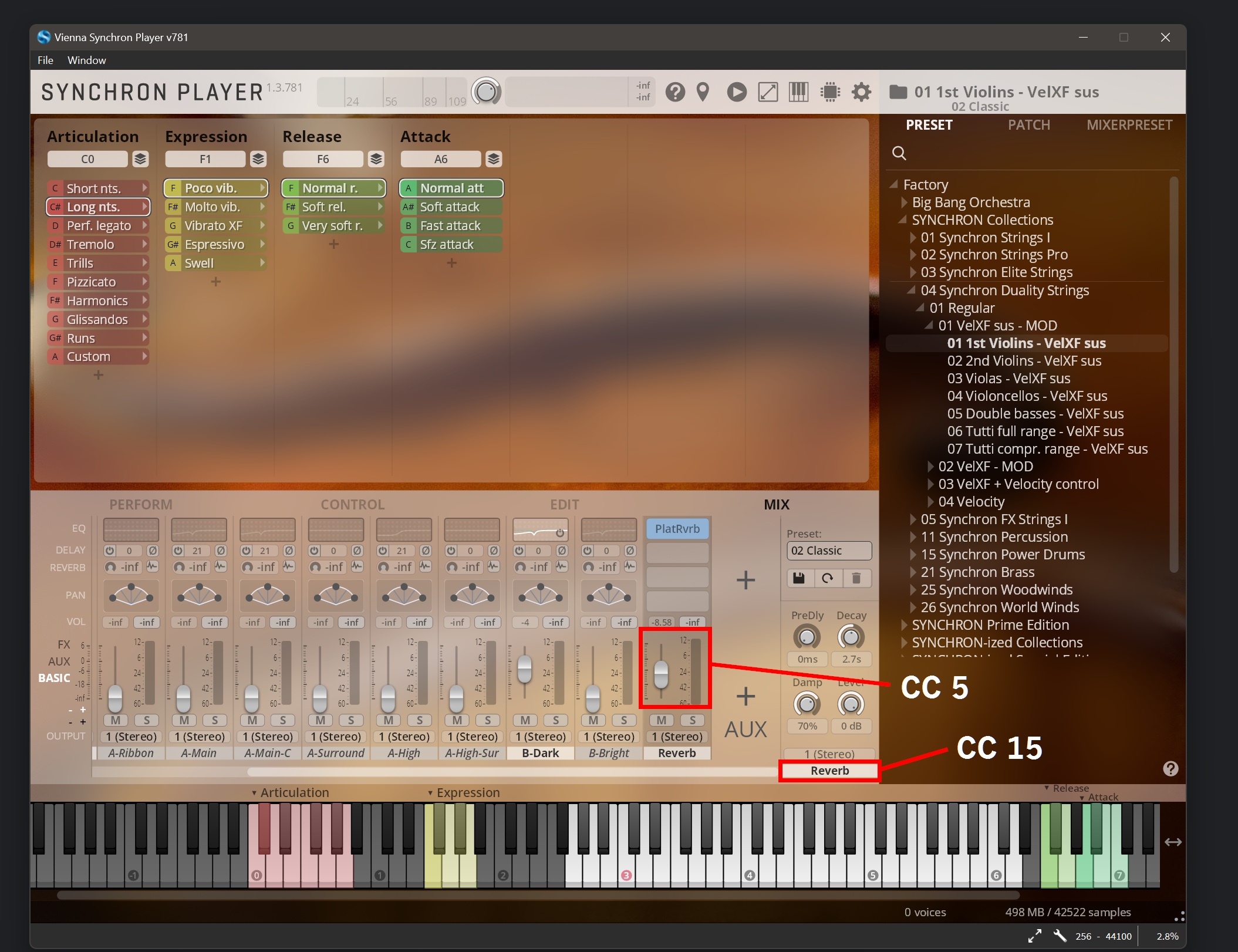Thanks Andreas. You've helped me understand.
Just to share one still-learning user's observations (and confusion) as based on factory presets:
1. There's two "reverbs" at work here. There's the aux reverb (usually the last mixer channel), and that receives signal from the aux send per channel, as revealed and adjusted when the user selects "aux."
2. And then there's the "Integrated Algorithmic Reverb," as it is called in point 15 "Reverb Settings" in the Synchron manual. This receives signal based on the "Reverb" control in the mixer (below Delay, above Pan).
3. The CC controlling the former aux return defaults to CC 5. In the Control tab, that's called "Return/1/Volume." The same control CC5 is titled "Reverb" in the Perform tab.
4. And the Integrated Algorithmic Reverb is called "Reverb" in the Control tab. Its level is set (by default) with CC14, and it's turned on or off based on CC 15.
5. Using Synchron Woodwinds as an example, none of the factory presets open using the algorithmic reverb. (I don't think I've ever seen any factory preset that uses the algorithmic reverb.)
6. Aux reverbs have two categories: Plate and Room. The algorithmic reverb has no specific category -- just 4 controls.
Okay. It's a bit of a head-scratcher, but I'm here to learn. Now two foremost questions:
Question 1: Synchron is platform where the room has already been included in the samples according to microphone placement. So, what is common or best practice in the inter-dependent use of these two reverbs in Synchron? I know that additional reverbs have a melding, finishing effect, but what is the difference in use between the two reverbs discussed?
Question 2: Why is the algorithmic reverb not often (if ever) enabled in factory presets?
